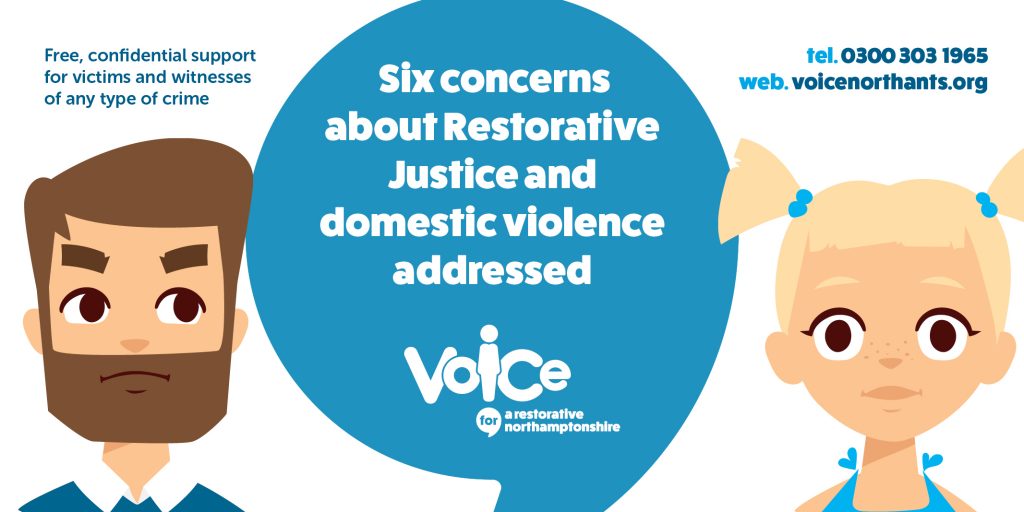6 concerns about restorative justice and domestic violence addressed

In January 2017, Labour MP Christina Rees asked if “there can be a place for restorative justice in domestic abuse cases alongside prosecution”.
The response from Sam Gyimah, Parliamentary Under-Secretary at the Ministry of Justice, noted that although domestic abuse should, wherever possible, be prosecuted, “there can be a place for restorative justice in domestic abuse cases alongside prosecution. This is with the strict caveat that it will be carried out with effective and ongoing risk assessment and safeguarding in place and led by experienced and skilled practitioners. In this way restorative justice can help some victims cope and recover.”
Despite this, there are understandably some concerns about restorative justice and domestic violence, which is why we’ve decided to address what we believe to be the six most common:
Concern 1: The victim will be pressured into taking part
A restorative justice program is entirely optional, but to ensure the victim doesn’t feel coerced or pressured into meeting the perpetrator, the preparation and process needs to be conducted to the highest standard.
Whether conducted face-to-face or indirectly, restorative justice relies on effective risk management (see concern 2) and a guided process that retains the best interests of the victim at its heart.
At no point is the perpetrator given the opportunity to seek involvement from the victim.
Concern 2: The safety of the victim will be at risk
Any restorative justice case must be combined with an effective, ongoing risk assessment that safeguards the victim.
This is possible with experienced, skilled practitioners who can ensure the restorative justice is undertaken safely and that the victim is offered the appropriate level of support.
It’s also worth bearing in mind that the meeting doesn’t have to be face-to-face; restorative justice can take place via Skype, phone, letter or email, and any written communication screened by a practitioner for coercive control (thus preventing contact details being shared).
Concern 3: The perpetrator will gain further opportunities to exert control over the victim
Restorative justice practitioners undergo a significant amount of training, much of which is focused on giving them the tools and wherewithal to recognise when their case involves intimate partner violence (as it can often be an element within a wide range of offences).
Practitioners also receive specialist training that teaches them how to recognise and mitigate instances of coercive control.
Concern 4: The perpetrator will ‘get off’ with a lighter sentence
If restorative justice takes place pre-sentence, it may affect the outcome, although there should never be an assumption that this would lead to a reduction in the punishment.
Equally, while restorative justice which takes place during custody may be taken into consideration at a parole hearing, the impact it has is likely to be minimal.
Concern 5: Restorative justice is all about saving money for the justice system
This is a common misconception.
As demonstrated by Gyimah’s answer, the Ministry of Justice does support the use of restorative practice, but they want to see it used as a service for the victim that sits alongside the prosecution – not one that replaces it.
Concern 6: The responsibility is passed from the state to those involved
Another common misconception.
In cases of intimate partner violence, prosecution and a full criminal justice response should always be expected; the victim is never made responsible for dealing with the perpetrator.
Wrapping up
Restorative justice won’t work for every instance of domestic violence, and the concerns above certainly merit discussion, but if you’re a victim of this type of crime, the addition of restorative justice to the court proceeding may prove invaluable.
